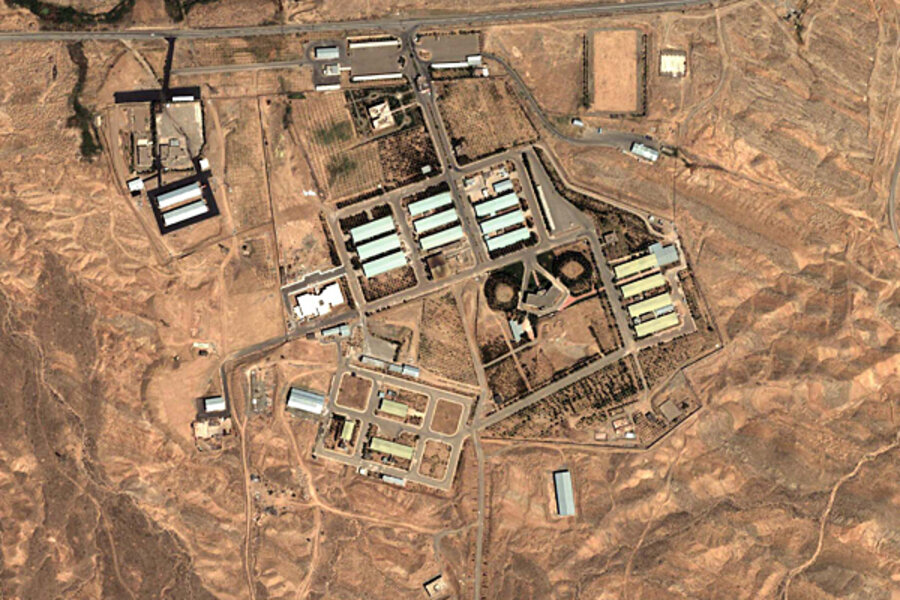Why optimism is low before Iran nuclear meeting: a tent and centrifuges
Loading...
| Washington
A brightly colored tent suspected of shielding the site of nuclear activities from the prying eyes of satellites and an apparently growing number of underground centrifuges to create enriched uranium are among the items the United Nations’ nuclear watchdog will want to discuss with Iran when the two meet Friday.
The International Atomic Energy Agency is playing down the prospects of getting what it wants from the meeting. The IAEA is seeking a go-ahead from Iran to inspect a military research-and-development site south of Tehran known as Parchin. The international body suspects Iran has used the secrecy-cloaked site to develop military applications for its nuclear know-how, a claim Iran denies.
The lead-up to Friday’s meeting has provided a window into Iran’s activities that suggest, as IAEA director general Yukiya Amano indicates, that Iran has something to hide.
Recent satellite shots taken of Parchin indicate that buildings have been torn down, earth has been moved, and water has been used to cleanse the site. Most recently, a tentlike structure has been erected that obscures the site from satellite photography.
“Until we have access to the facilities, we cannot say for sure,” Mr. Amano told reporters this week. “But through the satellite imagery, we think that Iran is moving soil, demolishing buildings, using water, removing fences, doing landscape activities, etc.,” he said. “We are thinking this would hamper verification activities.”
Indeed, many nuclear experts believe Parchin has probably already been cleansed of any evidence of the illicit nuclear explosives research that the IAEA suspects. Still, Amano says he is not optimistic that Friday’s meeting in Vienna will end in an agreement on inspections.
Calling Iran’s cooperation until now “insufficient,” he added that the agency had no “indication that this will be changing very soon.” As a result, Amano said he is not “optimistic about the outcome of the coming meeting.”
Some nuclear experts have predicted that Iran might try to temper reactions to its activities by moving toward an accommodation of the IAEA’s longstanding proposal to inspect the Parchin site. But such predictions seem less likely all the time to come true.
In addition, on Thursday new reports surfaced suggesting that Iran is bucking international demands on its uranium enrichment activities.
Diplomatic sources in Vienna, where the IAEA is headquartered, told Reuters that Iran is accelerating the installation of centrifuges designed to spin out enriched uranium at its underground Fordow nuclear facility near the city of Qom. That development, if true, would fly in the face of demands from the United States and other Western countries involved in international talks with Iran that it dismantle its centrifuges at Fordow and close down the site as part of a broad agreement on its nuclear program.
The Fordow report, along with the installation of tents at Parchin, only seem likely to do one thing: feed the fires of those who say Iran is playing the international community and has no interest in reaching a diplomatic accord on its nuclear program.
The topic of Iran’s nuclear program is expected to dominate the next meeting of the IAEA’s 35-nation governing board, set for Sept. 10-14.







